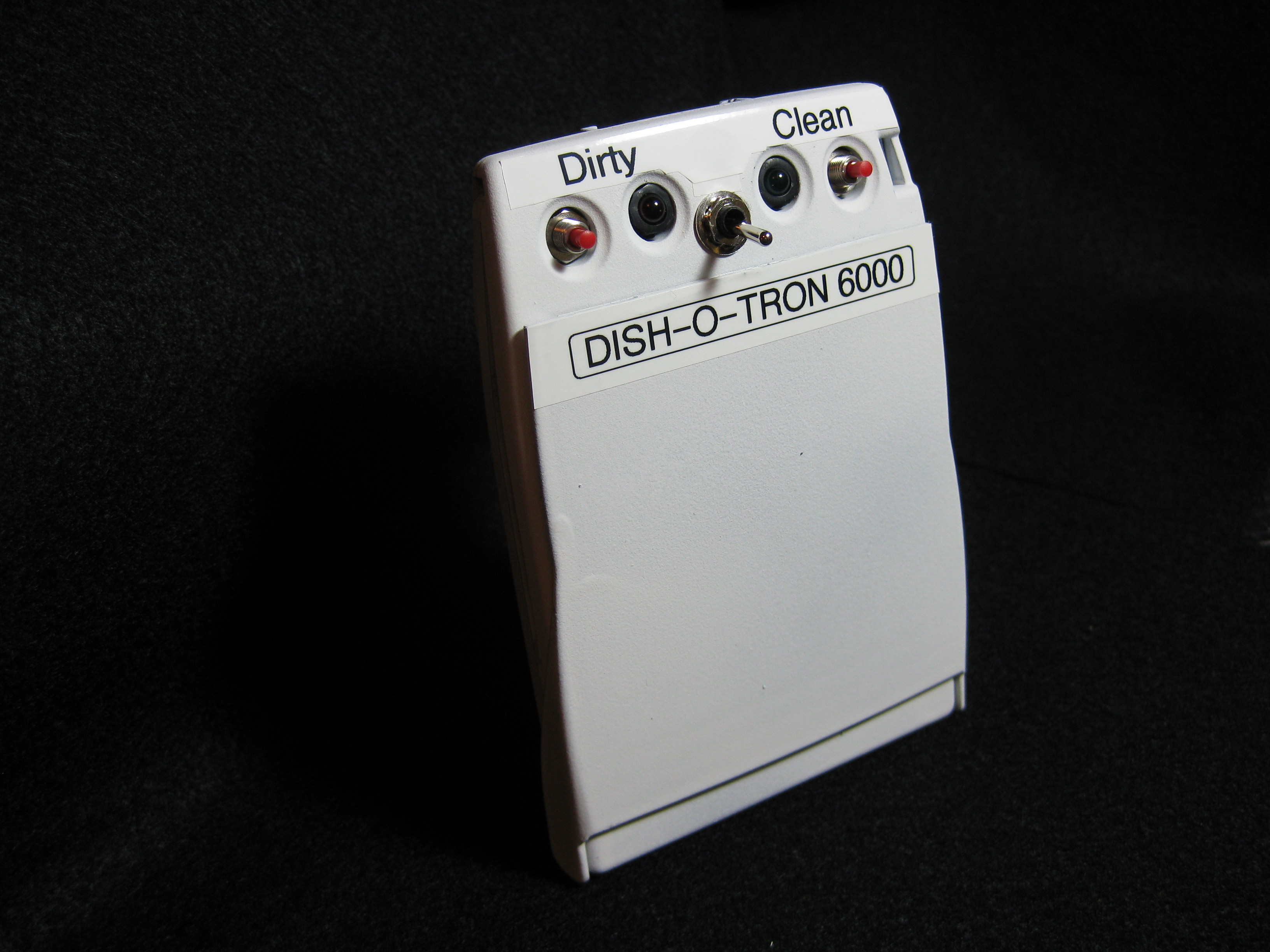I’m absentminded in general, but especially when it comes to the dishwasher. I can never remember whether the dishes are clean, whether the machine needs to be run, or emptied, or whatever. I needed a solution to this problem. My first thought was to hang a flippable sign on the door that said “clean” on one side, and “dirty” on the other. Simple, logical, functional. My second thought was, “What?!? That’s dangerously under-engineered. I can make something much more ridiculous than that”.
This contraption is the result.


